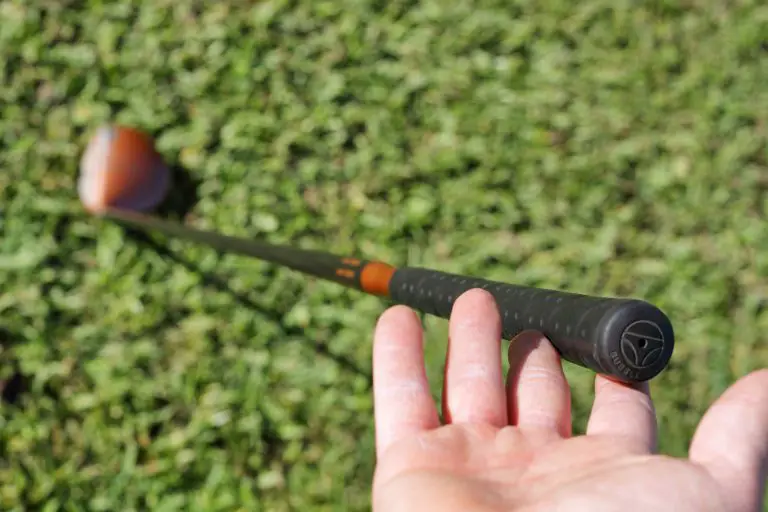Should I Leave My Golf Cart Plugged In All The Time

As a golf cart owner, you may have wondered whether it’s best to leave your golf cart plugged in all the time or to unplug it after charging. This question arises from the desire to optimize battery performance, extend battery life, and ensure the convenience of a fully charged cart whenever you need it. In this comprehensive guide, we will explore the factors and considerations that can help you make an informed decision regarding whether to leave your golf cart plugged in all the time.
Battery maintenance and longevity, convenience, and performance on the course are all factors to consider when making this decision. On one hand, leaving your golf cart plugged in can ensure that your batteries are consistently charged, ready for use, and potentially extend their lifespan. On the other hand, concerns about overcharging, increased electricity consumption, and safety may lead you to consider unplugging your golf cart after charging.
Understanding the impact of battery type, frequency of use, and storage conditions is essential in making the right choice for your golf cart. Additionally, considering the recommendations of experts and manufacturers, as well as debunking common misconceptions, can provide valuable insights to guide your decision-making process.
By delving into the details and exploring the potential benefits and drawbacks, we aim to equip you with the knowledge necessary to determine whether leaving your golf cart plugged in all the time is the optimal approach for you. So, let’s dive in and explore the factors that will help you make an informed decision regarding your golf cart’s charging habits.

What are the potential benefits of leaving my golf cart plugged in all the time?
Leaving your golf cart plugged in can offer several potential benefits that are worth considering. By exploring these benefits, you can make an informed decision about whether it is the right approach for you and your golf cart.
Battery maintenance and longevity
One potential benefit of keeping your golf cart plugged in is improved battery maintenance and longevity. Regular charging helps prevent deep discharge, which can be detrimental to battery health. By maintaining a consistent charge level, you can extend the lifespan of your batteries.
Convenience and readiness for use
Leaving your golf cart plugged in ensures that it is always ready for use whenever you need it. Instead of worrying about the battery charge level before each outing, you can simply unplug the cart and hit the course with peace of mind.
Enhanced performance on the course
A fully charged battery contributes to optimal performance on the golf course. It ensures that your cart has sufficient power to tackle hills, provide consistent speed, and maintain performance throughout your round. By leaving your golf cart plugged in, you can maximize its performance potential.
What are the potential drawbacks of leaving my golf cart plugged in all the time?
While leaving your golf cart plugged in offers benefits, there are also potential drawbacks that should be considered. Understanding these drawbacks can help you make an informed decision based on your specific circumstances.
Overcharging and battery damage
One potential drawback of continuous charging is the risk of overcharging, which can lead to battery damage. Over time, overcharging can cause the battery to lose capacity and reduce its overall lifespan. It is important to monitor the charging process and ensure that the charger has proper voltage regulation to prevent overcharging.
Increased electricity consumption and cost
Leaving your golf cart plugged in continuously will result in increased electricity consumption. Depending on your electricity rates, this can lead to higher costs over time. It’s important to weigh the convenience of keeping the cart plugged in against the potential impact on your energy bill.
Safety concerns
Continuous charging raises safety considerations, such as the risk of electrical hazards and potential fire hazards. While modern chargers are designed with safety features, it’s important to follow manufacturer guidelines, ensure proper ventilation, and inspect the charging system regularly to minimize any risks.
How does the type of battery impact the decision to leave a golf cart plugged in?
The type of battery in your golf cart is an important factor to consider when deciding whether to leave it plugged in. Different battery types have different charging requirements and characteristics. Let’s explore how battery types can influence your decision.
Lead-acid batteries
Lead-acid batteries, commonly used in golf carts, require regular charging to prevent sulfation and maintain optimal performance. Leaving them plugged in can help prevent deep discharge and extend their lifespan. However, it’s important to avoid overcharging, as it can cause electrolyte loss and damage the battery.
Lithium-ion batteries
Lithium-ion batteries are gaining popularity in golf carts due to their high energy density and longer lifespan. These batteries generally have built-in battery management systems that protect against overcharging. While leaving lithium-ion batteries plugged in is generally safe, it’s important to follow manufacturer guidelines and recommendations.
Other battery types
There are also other battery types available for golf carts, such as gel batteries and AGM batteries. Each type has its own charging requirements and considerations. It’s important to consult the manufacturer’s recommendations for the specific battery type installed in your golf cart.
Should I consider the frequency of use and storage conditions?
The frequency of use and the storage conditions of your golf cart play a role in determining whether to leave it plugged in. Let’s examine how these factors can influence your decision.
Regular usage patterns
If you use your golf cart frequently, leaving it plugged in can be a convenient option. It ensures that the battery remains adequately charged, eliminating the need for manual charging before each use. However, it’s still important to monitor the charging process and avoid overcharging.
Extended periods of non-use
If you anticipate extended periods of non-use, such as during the offseason or while on vacation, it may be advisable to disconnect the charger. Storing the battery at an appropriate charge level, typically between 50% and 80%, helps maintain its health during periods of inactivity.
Climate and environmental factors
Climate and environmental factors can also influence your decision. In extreme temperatures, such as hot summers or cold winters, it may be beneficial to leave the golf cart plugged in to prevent temperature-related battery issues. However, it’s important to ensure proper ventilation and monitor the charging process.
How can I properly maintain and care for my golf cart batteries?
Proper maintenance and care are crucial for maximizing the lifespan and performance of your golf cart batteries. Let’s explore some essential practices to ensure optimal battery health.
Following manufacturer guidelines
Always follow the manufacturer’s guidelines and recommendations for charging and maintenance. They provide specific instructions tailored to your golf cart and battery type, ensuring you take the appropriate steps for optimal battery care.
Charging practices and maintenance routines
Implement good charging practices, such as avoiding overcharging and maintaining proper charge levels. Regularly inspect the battery terminals for cleanliness and corrosion. Clean them as necessary and ensure tight connections to promote efficient charging and performance.
Regular inspection and cleaning
Periodically inspect your battery for any signs of damage or wear. Check for leaks, cracks, or swelling and address any issues promptly. Clean the battery terminals and cables to remove any corrosion, which can hinder the charging process.
Is it beneficial to use a battery maintenance device or charger?
Battery maintenance devices or chargers can offer additional benefits in preserving the health and performance of your golf cart batteries. Let’s explore some options that can help optimize battery maintenance.
Battery desulfators
Battery desulfators are devices designed to remove sulfation, a common issue in lead-acid batteries. They use electronic pulses to break down sulfation and restore battery capacity. Using a desulfator can help prolong the life of your lead-acid batteries.
Trickle chargers
Trickle chargers provide a low, constant current to keep the battery charged without overcharging. They are ideal for long-term storage or maintaining the charge during periods of inactivity. Trickle chargers are often equipped with automatic shutoff features to prevent overcharging.
Smart chargers
Smart chargers, also known as intelligent chargers, use advanced technology to monitor and adjust the charging process based on the battery’s needs. They offer features such as temperature compensation, voltage regulation, and charging algorithms that optimize the charging cycle. Smart chargers can help maximize battery performance and longevity.
What do experts and manufacturers recommend regarding leaving golf carts plugged in?
Expert opinions and manufacturer recommendations provide valuable insights when making decisions about charging golf carts. Let’s explore the perspectives of industry professionals and manufacturers.
Insights from industry professionals
Experts in the field of golf cart batteries generally agree that leaving the cart plugged in is beneficial for lead-acid batteries, as it helps prevent deep discharge and extends their lifespan. However, opinions may vary depending on battery type and usage patterns. Consulting professionals or battery specialists can provide personalized guidance based on your specific situation.
Manufacturer guidelines and recommendations
Manufacturers often provide guidelines and recommendations regarding the charging and maintenance of their golf cart batteries. These guidelines take into account the specific characteristics of the battery type and offer insights on charging practices, storage recommendations, and other relevant factors. It’s important to review and follow these guidelines to ensure optimal battery performance.
How can I determine the best approach for my specific golf cart and battery setup?
Determining the best approach for your golf cart and battery setup requires considering individual factors and gathering relevant information. Here are some steps you can take to determine the optimal approach:
Seeking professional advice and consultation
Consulting a professional in the golf cart or battery industry can provide valuable insights tailored to your specific situation. They can assess your battery type, usage patterns, and other relevant factors to provide personalized advice and recommendations.
Considering individual factors and usage patterns
Evaluate your individual factors, such as frequency of use, storage conditions, and battery type. Consider how leaving your golf cart plugged in or unplugging it aligns with your specific circumstances and goals. Review the benefits and drawbacks discussed earlier in this guide to make an informed decision.
Experimenting and monitoring battery performance
If you’re uncertain about the best approach, you can conduct experiments to gauge the impact on battery performance. Monitor the battery’s state of charge, assess its overall health, and evaluate the results of different charging approaches. This empirical data can guide your decision-making process.
Common misconceptions and pitfalls to avoid when dealing with golf cart battery charging
There are common misconceptions and pitfalls that you should be aware of when it comes to charging golf cart batteries. Avoiding these misconceptions will help you make sound decisions and maintain optimal battery health.
Overreliance on outdated information
Be cautious of outdated information or myths surrounding golf cart battery charging. The technology and understanding of battery maintenance have evolved, so it’s important to rely on current and reliable sources for accurate information.
Neglecting proper battery care and maintenance
Leaving your golf cart plugged in or unplugging it is just one aspect of battery care. Neglecting other essential maintenance practices, such as cleaning terminals, checking water levels (for lead-acid batteries), and monitoring battery health, can negatively impact battery performance and lifespan.
Failing to adapt to individual battery requirements
Each battery type has its own charging requirements and characteristics. Failing to understand and accommodate these requirements can lead to improper charging practices and compromised battery health. Always refer to the manufacturer’s guidelines and recommendations for your specific battery type.
Conclusion
The decision of whether to leave your golf cart plugged in all the time requires careful consideration of various factors. By weighing the potential benefits and drawbacks, understanding battery types and charging requirements, and considering your individual circumstances, you can make an informed choice that maximizes battery performance and longevity. Regular maintenance, adherence to manufacturer guidelines, and seeking professional advice when needed will help you ensure optimal battery health and enjoy a smooth golfing experience.






